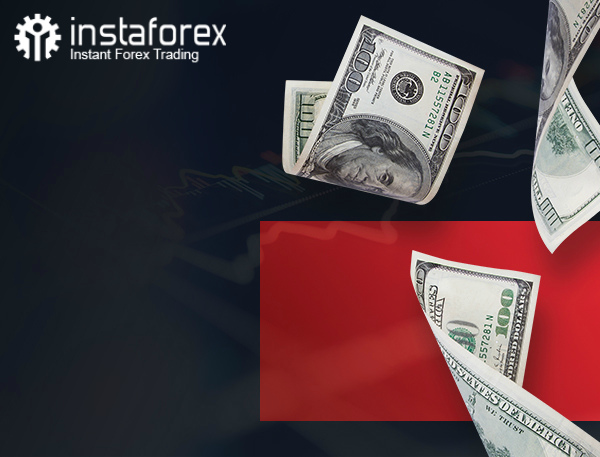RatingFX: independent rating of Forex brokersGlossary. The Major Forex Market Terms.Forex Foreign Exchange – a term meaning conversion operations – deals of currency market agents of exchanging the specified amounts of one country currency to another one at a negotiated price for a certain date. Arbitrage – purchase or sale of a financial instrument and simultaneous opening of opposite position on a correlated market with the purpose of gaining profit due to a slight price divergence between the markets. Ask – the currency rate at which the bank sells the base currency. Base Currency – the first currency in the currency pair. Basis point – 0.01% (applied to the Central bank interest rates). Balance – amount reflecting the Client’s account state exclusively of the operations carried out by a Client at a current moment. Bank – organization or corporation which receives deposits at short notice and term deposits and pays an interest on them, it also discounts the accounts, giving loans and investing capital in security papers, accepting and issuing the checks. Bear – a trader working on the rate lowering. Bear Market – currency market with a down-going rate trend. Bid – currency rate. At this rate the bank buys the base currency. Big figure – is the dealer’s slang for base number – 100 points Broker - legal body or operating company acting as an intermediary between the buyer and seller, it requires commission payment. Bull – a trader working on the rate upturn. Bull market – currency market with the rate advancement tendency. Buy- purchase Cable – the rate of GBP/USD currency pair (jarg.), this title comes from the middle of 19 century when the pound quotations started to be transmitted through thetransatlantic cable to the American continent. Chart (figure, graph, diagram) – graphic display where all price fluctuations and other data are visible. Closed position – market position. For this positiona reverse transaction and full payment were accomplished. Cross rate – the market exchange rate between two currencies except the US dollar. Currency – absolutely any form of money in circulation. Currency pair - two currencies of the quotation on FOREX market. For example, EUR/USD. Counter currency – the second currency in the currency pair. Clearing – settlement, accomplishment of mutual payments. Commission – commission fee charged by a broker (or other intermediary) for running the operations on behalf of a Client. Consolidation – a figure for the market situation technical analysis: characterized by a price movement (rate) of the financial asset “sidewards” (without any certain up-going or down-going trend). Contract for difference – CFD – a contract of providing the opportunity for one of the parties to carry out a speculative transaction with a certain financial asset without a physical settlement. Day trading – opening or closing one or several orders during one trading day. Deposit – funds credited to account for further operations. Divergence (discrepancy) – situation on the market when two or more index charts differ from the price charts. Diversification – a developed strategy used for reducing the risk, the capitals are divided between different shares, bonds and real estate. Downtrend – downward price movement on the market. Double Top – a figure for the market situation technical analysis: the rate advances two times to some level and then decreases again. Derivative – a contract which price changes together with the connected price or the basic price of paper, futures or another physical instrument. The most widespreadderivative product – option. Economic indicator – statistical data showing the major economic trends. Euro – the currency of the European Monetary Union which replaced the European Currency Unit. European Monetary Union – the main goal of the EMU is in establishing the single European currency or Euro which officially replaced the currencies of countries, the EU members in 2002. In January 1999 the first stage of Euro introduction started. Now Euro is used as a fully legitimate medium of payment active within the EU countries. European Central Bank, ECB – the Central bank of the European Monetary Union. Elliot Wave Theory – the system of analysis and forecasting the price movement based on the Elliot Theory. The main postulate: the price moves in five waves towards the main trend, which is followed by three correctional waves afterwards. Equity – a value reflecting the Client’s account balance including the operations carried out by the Client at the current moment. Exchange rate – rate at which a currency can be exchanged to another one. Fed – an organization which practically comes as the Central bank of the USA. Financial instrument – options, security papers, goods, futures or other values which can be estimated in currency; or the currency transaction record. Flag – a graphic figure on the technical analysis chart. A great advancement takes place, after that the price moves in a narrow range for a while and finally drops, and conversely. Forecast– future trend forecastby means of investigation and analysis of all available data. Fundamental analysis – price change forecasting made by the analysis of the current economic state. For instance: accountable influence on the events price reflected in the news and economic indicators shift. Futures – standard contracts for exchange and sale requiring delivery of production, currency, bonds at a certain price for a certain future date. Hedging – urgent orders execution for buy or sell of the currency with the purpose of avoiding the price fluctuations. The hedging significance is in buying (selling) the currency contracts for a term simultaneously with selling (buying) of available currency with the same delivery term and turnover operation accomplishment at maturity of the actual currency delivery. Hard Currency (freely convertible currency) – currency which is accepted everywhere for payments at the current market rate; convertible currencies are considered to be the currencies of those countries which have let down all restrictions, at least for the current operations (including the liberty of financial operations) have not less than 20 world’s leading countries. Index - comparison standard for measuring the financial or economic effectiveness. For example, S&P 500 or Consumer Price Index. Indicator – data for getting the information on the general state of economy or the financial markets. A customary public opinion testifies to that the technical indicators help to win on the market. Interbank rates – currency rates quoted by big international banks to other big international banks. The difference between the rates of buy and sell can be near 0,03-0,08%. Interest – a fee for usage of borrowed money, usually it is an interest in percentage points of the loan amount. Interest rate – annual interest Interbank rates – currency rates set by large international banks for other worldwide banks. Intervention – active actions of the Central bank on the market for changing the rate of a certain currency. Inflation – economic state when the consumer prices are rising and the purchasing power is moving down. Last (the last deal price) – an average value between the last Bid and Ask (or sometimes it is the last Bid value). Leverage – usage relation of own and borrowed funds for running the trading operations. A loan provided by bank to a Client for carrying out margin trading. Limit (restriction) – maximal and minimal price value for decision making. Limit order – an order to buy (sell) at reaching the set price or better. Long (long position) – purchase or opened Buy position. Loss (damages) – capital reduction as a result of negative profit. Lot – the smallest indivisible volume of buy/sell operations Margin - collateral (security deposit) securing the cover of possible losses which can emerge during the margin trading. Margin call (a requirement to advance the collateral) – a message of the Dealing Center to a trader about the necessity to add the funds to the margin account for covering the losses from unfavorable price movement and supporting the margin level set by the Dealing Center. Margin trading – currency tradingon security (margin, see above). At margin trading the reverse transaction is obligatory. Market maker spread – difference between the prices at which the brokerage company buys and sells the currency. Market order – a requirement of buying or selling at the best price available at present moment. Market price – the last message about the price value at the current moment. Nikkei Index – shares index of 225 leading companies presented on the Tokyo Stock Exchange. Offer – the same as ask. Or the invitation to a deal from the other side. Open position – a market position without a completed reverse deal for the current moment. Order – the Client’s request to a broker for buying (buy order) or selling (sell order) at a specific or market price. Option – a contract enabling to buy/sell the currency at a fixed price to the certain date (American) or for a certain date (European). Oscillator – a term used in the technical analysis of the financial markets: the pace curve fluctuating around zero line (or between 0 and 100%), technical indicator showing the balance of overbuying or overselling on the market. As soon as the oscillator reaches the highest value the market is overbought, at minimal rate – it is oversold. Overbought – a market state occurring after a significant price (rate) upturn of a financial asset. In this case a correctional drop is possible. Oversold - a market state occurring after a significant price (rate) falling of a financial asset. Pip(s), point – minimal possible price change (the last figure in the currency rate writing). Position – the values quantity in ownership (long position) or the debt size (short position). Profit – positive capital addition in the result of investments or business operation after deducting all expenditures. Rally – a sharp price (rates) soaring on the financial market. Reaction – a price (rates) movement against the dominating tendency on the financial market. Risk – change susceptibility, its probability is unknown. Often used with a negative meaning for indicating the probability of unfavorable changes occurrence. Range – the highest and the lowest actual prices of selling the production during a certain period of time. It also called price dispersion. Resistance – the price level at which active sales can stop or extend the upward tendency. Sell – pass a monopolistic holding of securities or other assets in exchange for money or values. Short – sale or opened Sell position (see Long). Short position – position formed in the result of short sale which is not covered yet. Spot (cash commodity) – a deal where all the settlements are accomplished on the second working day after making the deal. Spread (scale) – a difference between the current purchase price (Bid) and sale (Ask) expressed in points (Pips). Stop-limit order – buy (sell) order at a certain price or better, but only after touching the set price rate. As a matter of fact, the combination of stop-order and limit order. Stop-loss – a stop order applied for limiting the losses. Operates for closing a position at a set price rate during its negative movement. Stop order – (stop-loss order) a command to buy or sell the currency at a fixed price or worse. This order is usually set for limiting the losses in case the market is moving in the direction opposite to the expected one. Stop Out – account state when a Client loses the opportunity to manage his account and one or several opened positions are closing compulsively at the nearest available price for keeping a positive balance on the account. Stop Out activates when the percentage indicator of the account balance (Margin Level) reaches 20% rate or lower. Support – price rate when active sales can stop or extend the downward tendency. Swap (position carrying over) – a combination of two opposite conversion deals in equal amount with different value dates. Usually, swapping is implemented at carrying over an opened position to another day. Swapping an opened currency position means keeping the position status (size and symbol) for a certain term in future. Technical analysis – market condition analysis based on the preceding price changing history. At such analysis the charts are used reflecting the price movement for definite timeframes. Thin market – a market with low supply and demand. Peculiarities: low liquidity, high spread and high volatility. Trade – transaction of security papers, currency and other values. Trader – one who buys and sells securities on his business account, not on behalf of clientele. Trading – purchase and sale of security papers and goods on a short term basis for getting a quick profit. Or any buying or selling of security papers or goods. Transaction – opeartion of opening/closing a position. Trend – the current general direction of price movement. Trading session – continuous time period during which the trading deals can be made on the base market. Trading range (price band) – a situation when the prices are fluctuating between the horizontal levels of support and resistance. Value date – The date of deals terms performance, i.e. physical money transferring. The settlement date can be only in working days, excluding the weekends and holidays for this currency. Volatility – relative speed at which the price is moving up and down. An annual mean square deviation of daily price change. Volume – the number of transactions during a definite period of time. Weighted moving average – moving average indicator which is calculated using the prices with the unit weight linearly moving to past. As a rule, the very last indicator gets the bigger weight. It is recommended to buy when the WMA rises and the price starts the uptrend under the curve. Selling is better when the WMA decreases and the price begins scaling down under the curve. |
Brokers Reviews
BROKER DE FOREX RECOMENDADO
Forex charts and quotes
|











